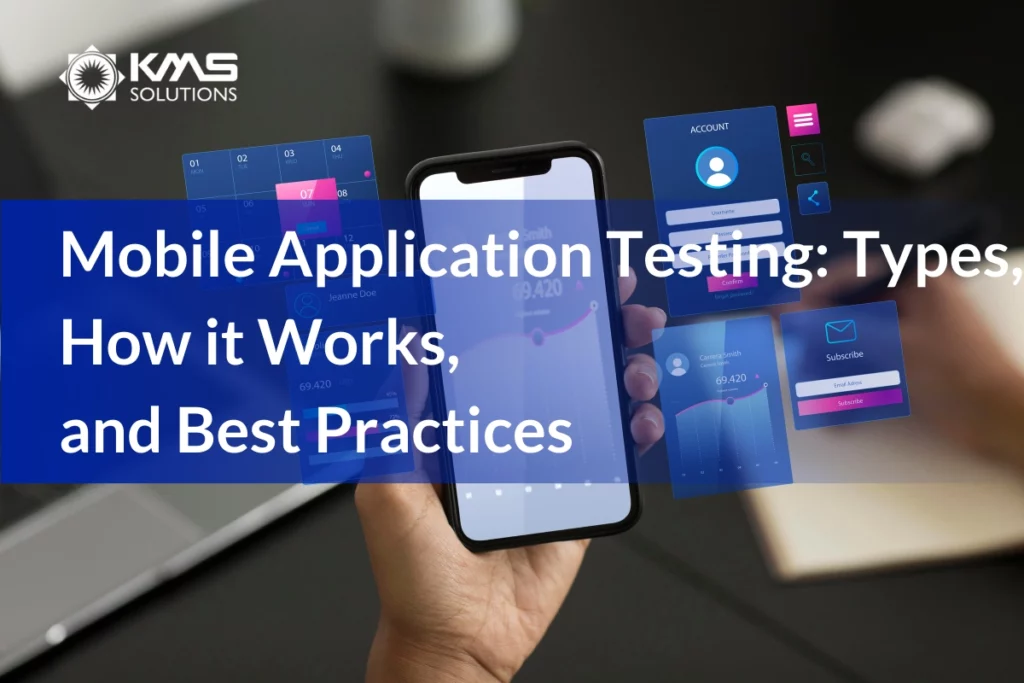Insights to Power Your Business
Evaluating Cyber Security Providers: Key Criteria for Banks and Insurers
Cybersecurity in the banking and insurance sectors has grown in importance. As these industries shift toward digital user experiences, they must implement robust digital security measures to protect sensitive data, ensure regulatory compliance, and maintain customer trust. Selecting the right cybersecurity provider is crucial for safeguarding critical assets and staying ahead of potential threats. However, with numerous options available, determining the best partner can be challenging. Let’s delve into the key criteria banks and insurers should consider when evaluating cybersecurity providers, helping them make informed decisions that fortify their defenses in an ever-evolving digital landscape. The Current State of Cybersecurity in Banking & Insurance Industry The IT security market in banking has continued its rapid expansion in 2024. As banks and insurers remain prime targets for cyberattacks, investments in security measures are steadily increasing. The market was valued at $38.72 billion in 2021, with projections indicating a compound annual growth rate of 22.4%, potentially reaching $195.5 billion by 2029.Moreover, the threats are becoming more advanced. Cyberattacks now range from targeting digital services to strategies on transaction systems. Organized groups and insider threats are leveraging advanced technologies, such as machine learning, to gain access to banking assets.Therefore, banks and insurers have taken...


API Load Testing: Step-by-step Guide On How To Load Test Your APIs
According to the 2024 Wifitalents API report, API usage has surged by over 300% in the past five years. As more businesses rely on APIs to connect services, power applications, and enable integrations, ensuring these interfaces can withstand heavy traffic is paramount.This article will give you the basics you need to start API load testing. Everything from the latest trends, best practices, and common pitfalls will be covered, so you're well-equipped to optimize your APIs for peak performance! 1. Why and When Should We Take The API Load Testing? API load testing API load testing involves assessing the performance and scalability of an Application Programming Interface (API) under simulated high-traffic conditions. This process typically includes conducting comprehensive load tests on multiple endpoints as well as evaluating the end-to-end workload of the entire API system. Testing is performed under both normal and high-traffic conditions to ensure robustness and reliability.A key reason for conducting API load testing is to verify the reliability and performance of the system. Critical transactions and immediate data exchanges in the banking and finance sectors are managed by APIs. Load testing ensures that these APIs can maintain high performance and reliability under peak loads, such as during market...

AI in Automation Testing: Revolutionizing QA Processes
AI in automation testing is rapidly transforming quality assurance (QA) processes, particularly within the BFSI sector. Leveraging AI brings enhanced efficiency, precision, and comprehensive coverage to testing methodologies. This article delves into the critical role of AI in automation testing, and its profound impact on BFSI software, and highlights how KMS Solutions leads the way with advanced services. 1. Understanding AI in the Automated Testing Processes 1.1 The Evolution of AI in Software TestingSoftware testing has undergone significant evolution, moving from manual processes to the early stages of automation, agile testing, and continuous testing. Today, AI-driven autonomous testing represents the cutting edge of this evolution. AI's relevance in software testing is underscored by its ability to handle tasks like test case generation, defect prediction, and performance monitoring with minimal human input. By leveraging AI, businesses can accelerate test creation, expand coverage, and reduce maintenance efforts.1.2 AI's Role in Automation TestingAutomation testing dramatically reduces the time required for repetitive tasks, enhances accuracy, and ensures thorough test coverage. By automating routine tasks, testers can focus on more complex scenarios, improving software reliability and performance. AI enhances the testing process by quickly identifying errors, suggesting solutions, and linking related tests, ultimately speeding up...

Financial System Implementation: 9 Best Strategies To Implement A Financial System
Implementing a financial system can be one of the most impactful decisions you make for your organization, but it’s not without its challenges. What if you could navigate these challenges with a clear roadmap that guarantees success?In this article, we’ll dive into the 9 best strategies for implementing financial software that goes beyond basic functionality. Each one is designed to help you leverage your financial system as a strategic asset. By the end, you’ll fully understand what it takes to successfully implement a financial system! 1. What Is Financial System Implementation? Financial system implementation Implementing a financial system involves deploying and integrating financial software or platforms within an organization.This process begins with identifying the organization's specific needs and selecting a system that meets those requirements. Once a system is chosen, the implementation involves configuring the software to align with the organization's financial processes, migrating data from existing systems, and ensuring seamless integration with other business applications. 2. Benefits of Financial System Implementation Financial system implementation benefits Implementing a financial system might seem like a big task, but the benefits it brings to the table make it well worth the effort.2.1 Improved Data Accuracy and IntegrityOne key advantage of using a...

Integration Testing for Enterprise Applications: A Comprehensive Overview
Ensuring seamless interoperability between diverse software components is crucial, and to achieve this goal, integration testing is necessary by verifying that different modules or services within an application interact correctly and meet business requirements.This overview will discuss the key aspects of integration testing, its critical role in ensuring that different system components work together, and the methodologies used to achieve reliable and efficient integration.Let’s learn to stay ahead in the ever-evolving world of enterprise software! 1. The Basics of Integration Testing: Overview Integration testing overview Integration testing is a crucial step in software development where separate modules are merged and tested together to identify any interaction problems. Unlike unit testing, which focuses on testing individual components in isolation, integration testing ensures that different modules work together seamlessly.This phase of testing helps to detect interface defects between modules, inconsistencies in data flow, and other integration-related issues that might not surface during unit testing. Several methods can be applied for integration testing, including top-down, bottom-up, sandwich and big-bang integration.Sandwich integration testing is a hybrid technique that merges the top-down and bottom-up integration testing methods, aiming to evaluate the interactions between different level of modules. 2. Why is Integration Testing Important For Your...

Mobile Application Testing: Types, How it Works, and Best Practices
Mobile applications have become an indispensable part of our daily lives, especially with the strong development of the Android & iOS operating system. Testing Mobile applications helps detect errors, improves user experience, and increases product reliability and security. This article will explore the types of mobile application testing, how they work, and the best practices developers should apply to optimize the testing process. What is Mobile Application Testing? Mobile application testing is the process of testing and determining the quality of an application to ensure that the application functions properly, is free from bugs, and provides the best user experience. This process includes various types of testing such as functional, unit, integration, UI, performance, and compatibility testing. Tools such as JUnit, Espresso, and Appium are used to support testing. The benefits of testing include improved product quality, increased user satisfaction, and guaranteed device complexity. Mobile application testing plays an important role in the development process to ensure the application's success in the market. Mobile application testing is an important process Why Mobile Testing Important For Your App? Mobile testing is crucial for any app's success as it ensures that the application functions seamlessly across a variety of devices and operating systems. With...

What is a Core Banking System? Essential Functions and Innovations
Core Banking System (CBS) is a centralized system designed to manage a bank's day-to-day operations, providing seamless integration of various banking functions. This software enables banks to offer consistent services across multiple branches and channels, enhancing efficiency and customer satisfaction. With the rapid technological advancements, the core banking system has evolved significantly, incorporating innovations like cloud computing, real-time data processing, and advanced analytics to meet the growing demands of digital banking. This article delves into the fundamental aspects of the core banking system, exploring its key functionalities and the latest innovations shaping the future of banking. 1. What is the Core Banking System? The core banking system is a back-end system that connects multiple branches of the same bank to deliver operations like loan management, withdrawals, deposits, and payments in real-time. This centralized system ensures uniform delivery of banking services across all branches and digital platforms, offering customers a unified and efficient experience, whether they access services in person or online. 2. The Evolution of the Core Banking System Historically, core banking systems were simple ledger-based solutions aimed at handling fundamental banking operations like deposit and withdrawal entries. As technology progressed, these systems transformed into sophisticated digital platforms capable of...
Keep Up With the Latest Trends and Best Practices
Join our subscriber community to get the free and fresh content as soon as it’s published

Subcribe to Our Blog

Thanks for subscribing to the KMS Solutions Blog!
You'll be the first to gain access to the latest insights, trends, valuable tips, and best practices shared by KMS experts in the BFSI field.



